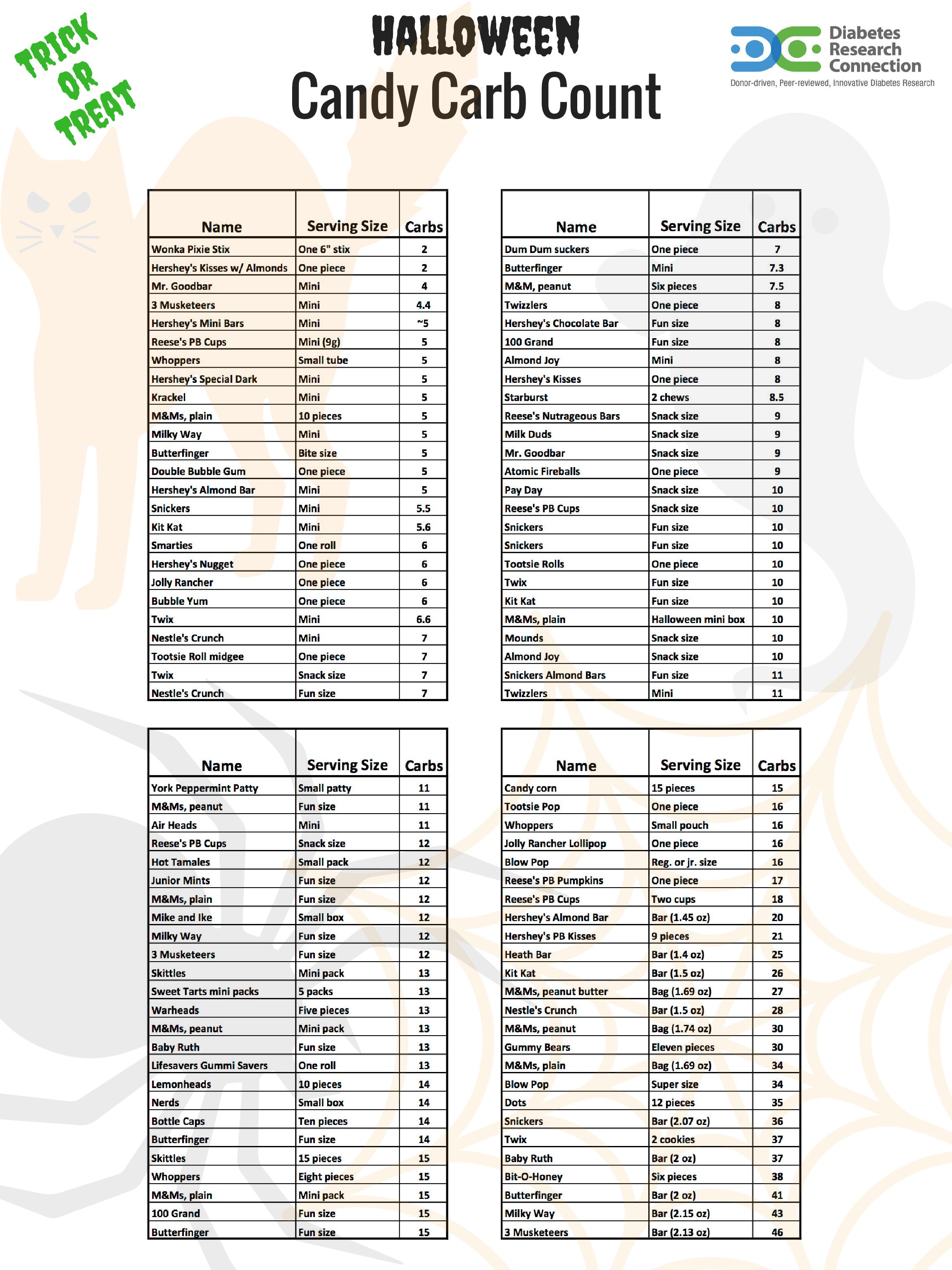Understanding T1D
Carbohydrate counts are important with people with diabetes. The spookiest part of Halloween for people with Type 1 Diabetes (T1D) isn’t ghosts or ghouls; it’s the carb-loaded candies. In T1D, the body can’t produce insulin, leading to an inability to regulate blood sugar levels.
Role of Carbohydrates
So, what’s the big deal with carbs? Carbohydrates, found abundantly in sweets, are the primary source of energy for the body. They break down into glucose, causing a rise in blood sugar levels. This is a tricky balance for people with T1D, but don’t fear! With some knowledge and planning, Halloween can still be fun.
How Halloween affects T1D Management
Imagine being in a candy-filled battlefield. That’s Halloween for people with T1D. The sheer abundance of sweet treats can make blood sugar management a challenging feat. But, isn’t knowledge power? Let’s use it to tame the Halloween candy monster!
Popular Halloween Candies and Their Carbohydrate Counts
Knowing the carbohydrate content of your favorite Halloween candies can help manage T1D. Let’s uncover the carb counts of some popular treats.
Chocolates
Snickers
The fun-size Snickers is a Halloween favorite. Each of these tiny delights contains approximately 10g of carbohydrates.
M&Ms
A fun-size pack of these colorful chocolates has around 9g of carbohydrates.
Gummies
Gummy Bears
A small pack of gummy bears has around 14g of carbohydrates. They’re chewy, they’re tasty, but they’re also pretty high in carbs!
Jelly Beans
With about 37g of carbs per small bag, jelly beans are a carb powerhouse.
Lollipops and Hard Candies
Jolly Ranchers
Each Jolly Rancher has about 6g of carbohydrates. They last long and don’t pack a huge carb punch.
Dum Dums
These tiny lollipops have about 6g of carbs each. A bonus? They last a long time!
Strategies to Manage T1D during Halloween
Now that we’ve unmasked the carbs in these candies, how do we use this information?
Monitoring Blood Sugar Levels
Keep a close eye on blood sugar levelsduring and after candy consumption. This will help adjust insulin doses accurately and avoid spikes in blood sugar.
Selecting the Right Candies
Choose candies lower in carbohydrates or ones that last longer (like lollipops). They offer the sweetness without a rapid rise in blood sugar levels.
Timing Candy Consumption
If possible, enjoy candies around mealtime when insulin is already being administered. This can help mitigate some of the blood sugar spikes.
Conclusion
Halloween doesn’t have to be scary for people with T1D. With knowledge about carbohydrate counts of popular candies and some smart strategies, it can be just as fun. Remember, the goal isn’t to banish all candies but to enjoy them in a way that keeps blood sugar levels stable. Stay safe, stay sweet, and have a happy Halloween!
FAQs
- Are some candies better than others for people with T1D? Yes, candies that have lower carbohydrates or last longer (like lollipops) can be better options.
- Can people with T1D eat candy? Yes, they can. However, they must monitor their blood sugar levels and adjust their insulin dosage accordingly.
- What is the best time to consume candy for a person with T1D? Around mealtime can be a good time to consume candy as insulin is already being administered.
- How does carbohydrate counting help people with T1D? Knowing the carbohydrate content of foods helps in determining the correct insulin dosage and maintaining stable blood sugar levels.
- How can I enjoy Halloween with T1D? With knowledge about the carbohydrate content of candies, regular monitoring of blood sugar, and timing candy consumption, you can enjoy Halloween safely.
Click here for a printable version.




